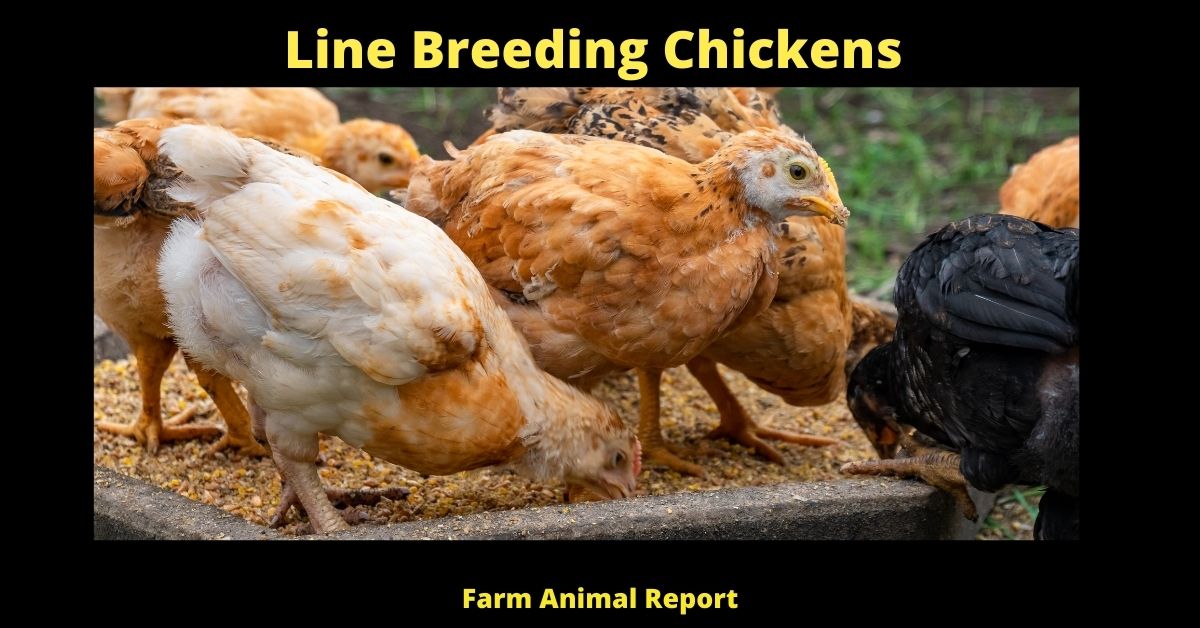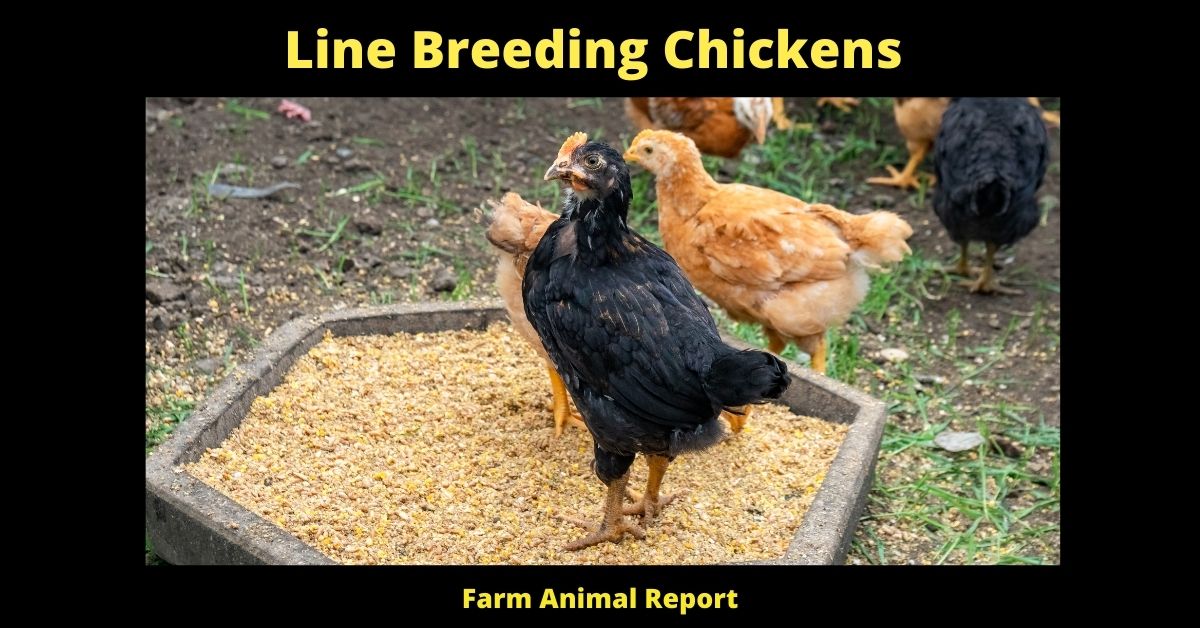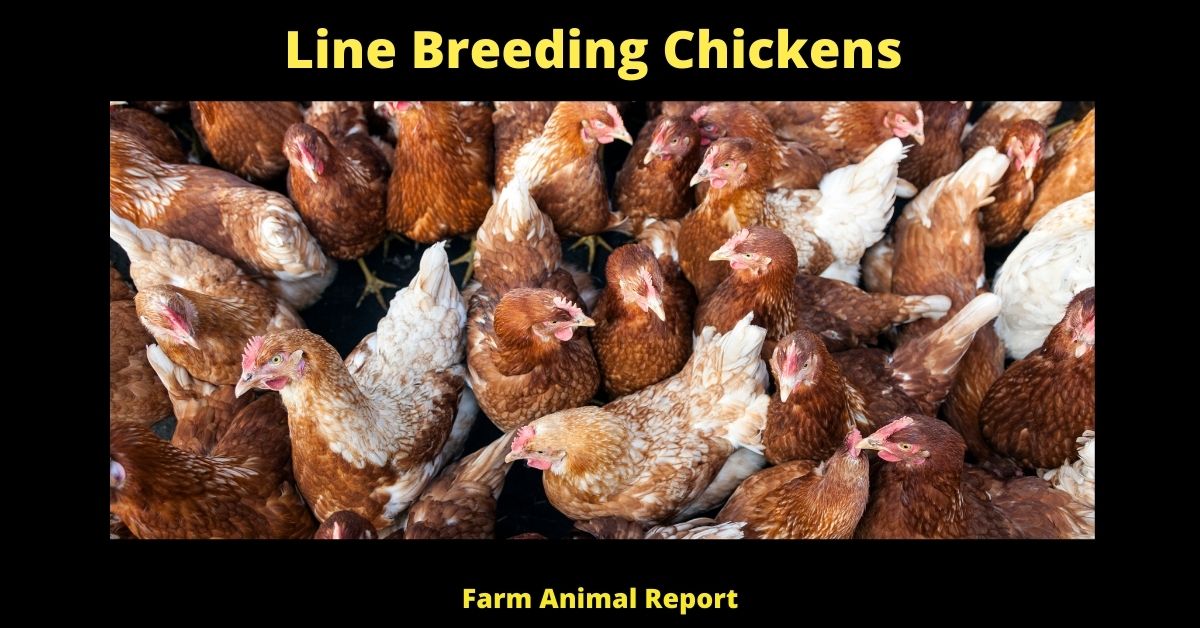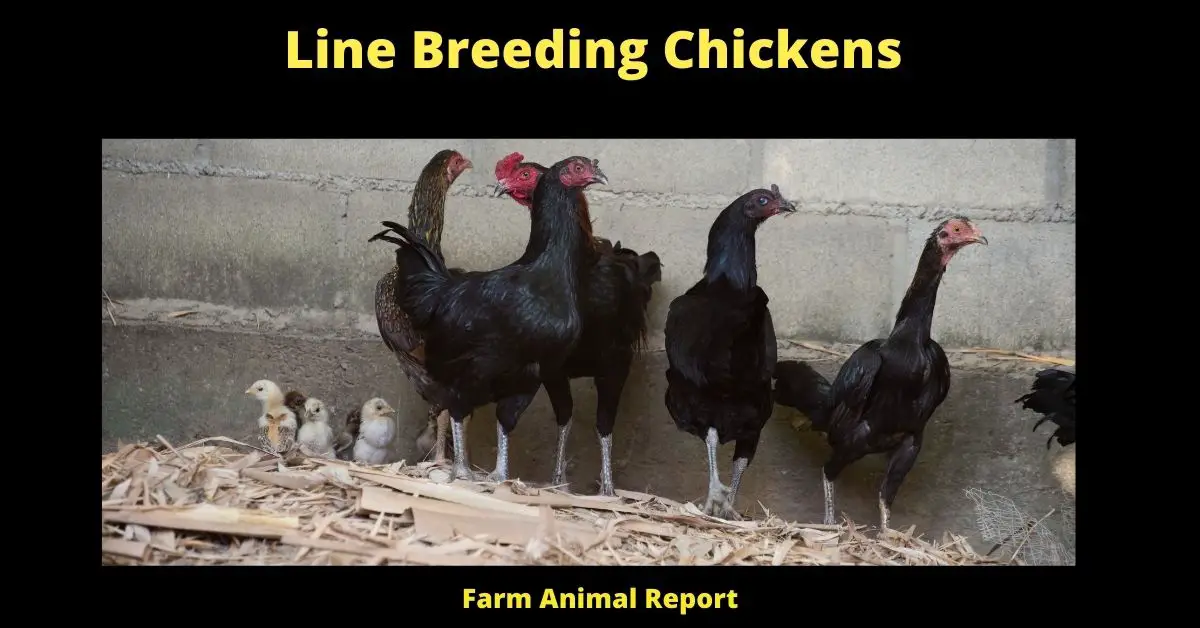Line Breeding Chickens
If you’re looking to improve your chicken stock, line breeding is the way to go. Linebreeding involves mating two chickens that share a common ancestor. This type of breeding results in offspring that are genetically similar to their parents.
Line-bred chickens often have desirable characteristics, such as disease resistance and good laying habits. In this blog post, we will discuss the basics of line breeding chickens and how you can get started!
What is Line Breeding Chickens and How Does it Work?
Linebreeding in chickens is the process of selecting chickens for breeding that are related to each other. This is done in order to preserve certain desired qualities in the offspring. Line Breeding Chickens
Check Out Amazon for Educational Resources for Breeding Chickens
Linebreeding can be used to fix certain traits or to improve upon them. It is important to note that line breeding is different from inbreeding, which is the process of breeding two closely related animals. Linebreeding is a controlled form of inbreeding that allows breeders to select which qualities are passed on to the next generation. Jump to 12 Ways to Make Money by Chicken Farming **CHARTS**
Chicken Line Breeding
There are three main types of linebreeding: straight, backcross, and flushing.
Straight linebreeding
involves selecting chickens that are directly related to each other (for example, a breeder might choose a rooster and his daughter as their parents).
The idea is that by breeding these chickens together, the breeder can fix certain desired traits in future generations.
Backcross Line Breeding
Backcross linebreeding is similar to straight linebreeding, except that the chickens selected are not as closely related to each other.
For example, a breeder might choose a rooster and his niece as their parents.
The idea is that by doing this, the breeder can bring back certain desired traits that might have been lost in previous generations.
Flushing Line Breeding
Flushing linebreeding is when a breeder chooses two unrelated chickens as their parents.
The idea behind this is that by doing this, the breeder can create new combinations of genes that might lead to new and desired traits in future generations.

What are the 4 Different Poultry Breeding Methods?
In Breeding Poultry, there are four different methods. These include line breeding, inbreeding, outbreeding, and crossbreeding.
1) Line Breeding Poultry
When you are line breeding chickens you are trying to improve a certain aspect of the bird. You do this by breeding the animal with one that has superior genes for the trait you are trying to improve. For example, if you wanted to create a chicken that had more meat on its breast, you would line breed chickens that had large breasts. Over time, this would result in larger average breast size in the flock.
2) Inbreeding Poultry
This is when you breed two closely related animals together, such as a father and daughter or brother and sister. The offspring of these pairings are called F-0 generation animals. Inbreeding can help to fix certain traits in a population because it increases the chance that an animal will inherit the desired trait from both parents. However, it can also lead to health problems because it increases the chance of genetic defects being passed down as well.
3) Out Breeding Poultry
Outbreeding is the opposite of inbreeding and is when you breed animals that are not closely related. This can be done by breeding animals from different bloodlines or even different species altogether. The goal of outbreeding is to create offspring that have the best traits from both parents. However, outbreeding can also lead to problems if the two animals are too different from each other and their offspring are unable to thrive.
4) CrossBreeding Poultry
This is when you breed two different species or varieties of animals together. For example, you could crossbreed a chicken with a duck or a turkey. The goal of crossbreeding is to create offspring that have the best traits from both parents. However, crossbreeding can also lead to problems if the two animals are too different from each other and their offspring are unable to thrive.
What is Line Breeding Chickens and How Does it Work?
Linebreeding is a type of inbreeding in which closely related animals are mated to produce offspring that inherit desired traits from their parents. Linebreeding is often used to fix certain desirable traits in a population of animals.
First, you need to identify the traits that you want to fix in your flock. This could be anything from body size and shape to feather patterns or even personality traits. Once you have decided on the traits that you want to improve, you need to find a chicken that has those desired qualities.
This chicken will become the “foundation” of your line-breeding program. You will then breed this chicken with closely related birds (i.e., siblings, cousins, etc.) in order to produce offspring that inherit the desired traits from their parents.
You will need to continue this process for several generations in order to fix the desired traits in your flock. Linebreeding can be a time-consuming process, but it is an effective way to improve the quality of your flock.

The 5 Steps that help you begin a line breeding program;
- Identify The weakness you want to Improve – The first step is to identify the weakness that you want to improve. This may be something like egg production, meat quality, or feathering.
- Identify a Chicken that has the traits you want to improve – Once you have identified the weakness, you need to find a chicken that has the traits you want to improve. This chicken will be the foundation of your line-breeding program.
- Begin Breeding with closely related birds, siblings, cousins, etc – Once you have found the foundation chicken, you need to begin breeding with closely related birds. This includes siblings, cousins, and even parents.
- Continue for several Generations – You will need to continue breeding for several generations in order to see any significant changes.
- Keep Accurate Records – It is important to keep accurate records of your line-breeding program. This will help you track your progress and make sure you are on the right track.
The Benefits of Line Breeding Chickens?
Some benefits can include an increase of;
- Docile behavior – meaning they are less likely to attack humans or other animals
- Disease resistance – meaning they are less likely to contract diseases
- Hardiness to the environment – meaning they can withstand harsher conditions such as cold weather or hot weather.
What are some potential drawbacks of line-breeding?
As with anything, there are always potential drawbacks. Some potential drawbacks of line breeding include;
- Inbreeding depression – this is when too much inbreeding leads to a decrease in vigor and productivity in the flock
- Reduced genetic diversity – this can lead to a decrease in disease resistance and an increase in susceptibility to environmental conditions
- Unpredictable results – because line-breeding is manipulating genetics, it is difficult to predict the exact outcome of each line-breeding attempt.
How to get started with line breeding chickens?
You will want to start by finding a good quality breeder who specializes in the type of chicken you are looking for whether it be for egg production or meat production. It is important to purchase your chickens from a reputable source to ensure that they are of good quality and free from disease.
Once you have obtained your chickens, you will need to set up a breeding pen. This pen should be large enough to comfortably house your chickens and allow them room to move around.
The importance of record-keeping when line-breeding chickens
One of the most important aspects of line breeding is keeping accurate records. You will need to keep track of which chickens are being mated, as well as the offspring that result from these matings. This information will be essential in determining which matings are successful and which ones are not.
Tips for success when line-breeding chickens
Here are some tips that can help you be successful when line-breeding chickens:
- Start with a small flock of chickens and gradually increase the size as you gain experience.
- Be patient! It takes time to see results from line breeding.
- Keep accurate records of your matings and offspring.
- Consult with a poultry breeder or veterinarian if you have questions or run into problems.
Troubleshooting common problems associated with line breeding chickens
One common problem that can occur when line-breeding chickens is inbreeding depression. This is a condition that can occur when closely related animals are mated too often and can result in reduced fertility, poor health, and decreased viability of offspring.
If you suspect that your chickens are suffering from inbreeding depression, it is important to consult with a poultry breeder or veterinarian. Another problem that can occur is genetic drift. This is when the gene pool of a population becomes smaller over time due to chance events, such as random mating or mortality. Genetic drift can lead to the loss of desired traits in a population of animals.
What are some Main Chicken Breeds that have been developed by Line-Breeding?
There are many chicken breeds that have been developed through line breeding. Some of the most popular and well-known breeds include the Rhode Island Red, the Plymouth Rock, and the Wyandotte. These breeds were all created by carefully selecting chickens with desired characteristics and then breeding them together to produce offspring with those same characteristics.
Line-breeding is a type of controlled inbreeding that is often used to fix certain desirable traits in a population of animals. This process involves mating closely related individuals over several generations. By doing this, breeders are able to “lock-in” desired traits so that they will be passed down to future generations. While line-breeding can be an effective way to improve a flock of chickens, it can also lead to inbreeding depression if not done carefully. This is why it’s important to choose a reputable breeder who knows how to line breed chickens responsibly.
When choosing a chicken breed, it’s always best to do your research and talk to experienced chicken keepers before making a decision. There are many factors to consider, such as climate, egg production, meat production, and personality. With so many different breeds of chickens out there, you’re sure to find one that’s right for you and your flock!

What is a Line Breeding Chickens Chart?
An Accurate Line Breeding Chart includes the names of all the ancestors in a direct line back to the original ancestor and their relationship to each other. This can be illustrated with a family tree. The Line Breeding Chart is used to help plan matings so that you can achieve your desired results more quickly, by preserving certain characteristics and speeding up the process of fixing others.
A Line-Breeding Chickens chart is essentially a family tree for chickens. It includes the names of all the ancestors in a direct line back to the original ancestor and their relationship to each other. This information can be used to help plan matings so that you can achieve your desired results more quickly, by preserving certain characteristics and speeding up the process of fixing others.
What’s the difference between Line breeding vs Inbreeding chickens?
The major differences are; inbreeding is the mating of two closely related individuals, while line breeding is the controlled inbreeding within a strain or family line.
Line-breeding is often used to fix certain desirable traits in a population of animals, while inbreeding is often done without any regard to genetic fitness.
While both methods can be used to improve certain characteristics, line breeding is generally considered a more controlled and less risky way to do so.
Inbreeding can result in harmful genetic defects becoming fixed in a population, while line-breeding allows for more control over which traits are emphasized. Therefore, it is generally considered safer and more effective to use line-breeding when trying to improve a flock of chickens.
How to Guage chicken cross-breeding results?
In determining whether or not a cross-breeding project has been successful, there are a few key factors to look at.
First, consider the traits that you were hoping to improve upon in the original breeds. If those goals have been met, then the project can be considered a success.
Secondly, take a look at the overall health and vigor of the new flock. If they seem happy and healthy, then you’ve likely created a hardy new breed of chicken!
Lastly, pay attention to any negative traits that may have emerged as a result of the breeding. If there are more negatives than positives, it might be best to scrap the project and start anew.
With all of that said, remember that line breeding is an inexact science. There will always be some trial and error involved. But as long as you’re paying attention to the results, you’ll eventually create a flock that’s just right for your farm!
What are the Negative Signs of inbreeding in chickens?
Some of the indications of inbreeding are;
- Lethargy
- Decreased egg production
- Fertility problems
- Increased susceptibility to disease and parasites
- Poor feathering
- Unusual plumage colors or patterns
- Weakened immune system
- Crests or wattles that are too large or small
- Legs that are too short or long
Inbreeding can also cause behavioral problems such as increased aggression, fearfulness, and cannibalism.
Chickens that have been inbred may also peck at their own feathers and skin, leading to self-mutilation.
If you suspect your chickens are inbred, it’s best to consult a veterinarian or poultry specialist for advice on how to proceed. Inbreeding is often unavoidable when line-breeding, but there are some measures that can be taken to minimize the risks.
Final Thoughts – Line Breeding Chickens
Line-breeding chickens can have many benefits for both the farmer and the consumer. It is important to do your research before line breeding, as it is not right for every chicken farmer. However, if done correctly, line breeding can lead to a healthier and more productive flock of chickens.





